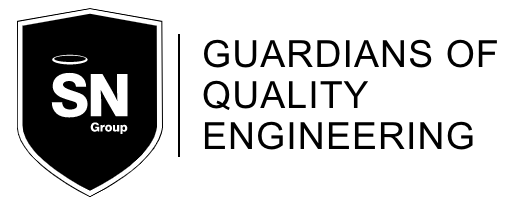SN-Access can support your inspection/test requirements. The company provides a range of standard and specialist NDT solutions to assist with integrity appraisal at fabrication, in-service or decommissioning stage. When combined with our rope access capability we are able to perform inspection and data collection almost anywhere on a client asset.
Our techniques include:
- Magnetic Particle Inspection
- Dye Penetrant Inspection
- Eddy Current Inspection
- Ultrasonic Inspection
- Visual Inspection
Magnetic Particle Inspection
Magnetic Particle Inspection (MPI) is a non-destructive testing technique used on ferromagnetic materials, which typically include carbon and mild steels. MPI uses magnetic fields and small magnetic particles suspended in solution to detect surface and, to a lesser degree, near surface discontinuities. The method is used to inspect a variety of product forms including castings, forgings, and weldments, particularly at fabrication stage.
MPI Theory: If a magnetic field is induced into a test piece, magnetic flux lines will travel through the test piece. If the magnetic flux lines encounter discontinuities, such as a crack, the flux lines are deflected around the discontinuity. If the discontinuity is sufficiently close to the surface to allow the deflected flux lines to deflect beyond the physical surface of the test piece, then magnetic particles will be attracted to this area of ‘flux leakage’. The resulting cluster of magnetic particles is known as an ‘indication’ and is visible to the naked eye.
Dye Penetrant Inspection
Dye Penetrant Inspection (DPI) is a widely used technique for identifying surface breaking defects such as cracks, cold laps and porosity in all non-porous materials. Typical uses include the detection of fine defects in aircraft components and on non-ferrous welded parts including stainless steels, aluminium and duplex. Advantages of DPI are:
- It is simple to carry out
- It is a relatively inexpensive technique
DPI Theory: DPI is a method that is used to reveal discontinuities by ‘bleed out’ of a coloured or fluorescent dye from a discontinuity. The technique is based on the ability of a liquid to be drawn into a ‘clean’ surface-breaking defect by capillary action. After a period of time (known as the ‘dwell time’ – typically 20 minutes) excess surface penetrant is removed and a developer applied. This acts as a blotter and draws out the penetrant from the defect to reveal its presence.
Eddy Current Inspection
Eddy Current Inspection (EC) is a technique used to detect surface breaking discontinuities in all electrically conducting materials. Uses include material sorting and in-service tube, bar and weld inspection. The main advantage is that testing can be conducted without the need to remove paint or surface coatings. Typical site applications include inspection of crane jibs, pedestals, pad-eyes (pre and post loading), drilling derrick substructures and wind turbine towers.
Eddy Current Theory: An alternating current is applied to an inspection coil, which creates a magnetic field. When placed next to a suitable test material, it induces an ‘eddy current’ into the test material. The presence of defects and material variations in the test material, affects the characteristics of the induced eddy currents. These changes are detected by an excitation coil and are displayed on a digital screen.
Ultrasonic Inspection
Ultrasonic Testing (UT) is a specialist NDT discipline that can be used to identify surface and sub-surface discontinuities in many materials but typically metals. It is particularly useful during the integrity assessment of welds and plate materials at fabrication stage, but is also an important technique for in-service condition monitoring of pipework and structural welds.
The key advantages of UT are:
- It can provide accurate real time information on remaining wall thickness and can determine the rate of corrosion or erosion if such mechanisms are in existence.
- It can also show the size, orientation and shape of any defects deep within a weld / material.
- It can be used through coatings, eliminating the need for removal prior to inspection.
Visual Inspection
As the name suggests, visual inspection is the detailed examination by eye, of a particular subject (ie. a fabricated component, plant item, section of pipework, weld, pressure vessel or structure). The technique is often used to establish whether further investigation using another NDT method (such as MPI, DPI, UT or EC) is required. The visual technique includes any examination utilising light in the visible spectrum, such as magnification (examination through binoculars or under a microscope) or use of digital image capture equipment such as borescopes.
A digital borescope places a tiny camera and light source on the end of a flexible probe and connects it to a digital screen, which can capture digital images. Borescope inspection is frequently used during the inspection of aircraft engines and gas turbines to view engine internals without the need to strip the engine down. It is also a practical method for internal inspection of vessels in processing facilities, as it can eliminate the requirement to make entry into a confined space and/or hazardous environment.
